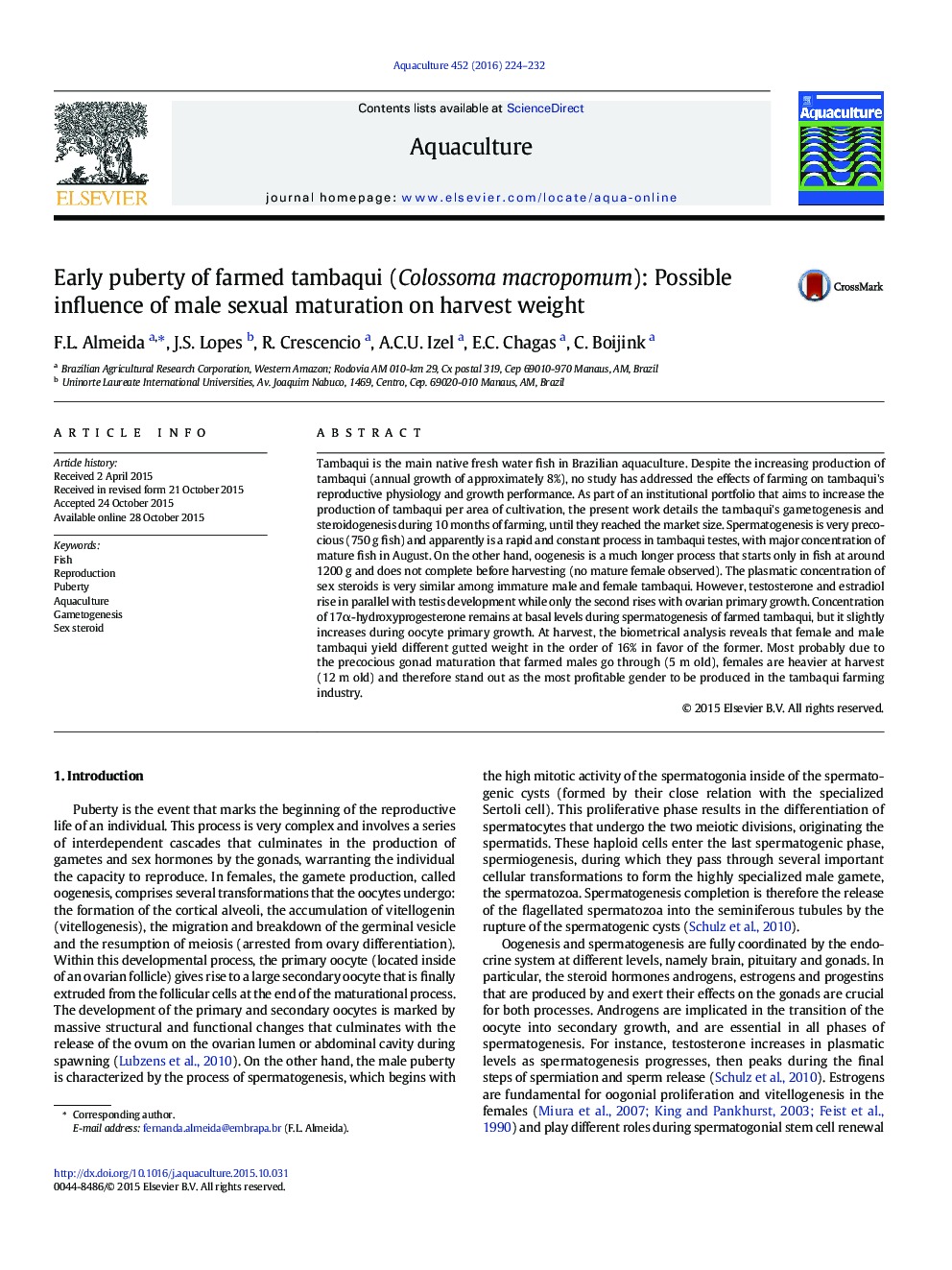| کد مقاله | کد نشریه | سال انتشار | مقاله انگلیسی | نسخه تمام متن |
|---|---|---|---|---|
| 8494053 | 1552835 | 2016 | 9 صفحه PDF | دانلود رایگان |
عنوان انگلیسی مقاله ISI
Early puberty of farmed tambaqui (Colossoma macropomum): Possible influence of male sexual maturation on harvest weight
دانلود مقاله + سفارش ترجمه
دانلود مقاله ISI انگلیسی
رایگان برای ایرانیان
کلمات کلیدی
موضوعات مرتبط
علوم زیستی و بیوفناوری
علوم کشاورزی و بیولوژیک
علوم آبزیان
پیش نمایش صفحه اول مقاله

چکیده انگلیسی
Tambaqui is the main native fresh water fish in Brazilian aquaculture. Despite the increasing production of tambaqui (annual growth of approximately 8%), no study has addressed the effects of farming on tambaqui's reproductive physiology and growth performance. As part of an institutional portfolio that aims to increase the production of tambaqui per area of cultivation, the present work details the tambaqui's gametogenesis and steroidogenesis during 10 months of farming, until they reached the market size. Spermatogenesis is very precocious (750 g fish) and apparently is a rapid and constant process in tambaqui testes, with major concentration of mature fish in August. On the other hand, oogenesis is a much longer process that starts only in fish at around 1200 g and does not complete before harvesting (no mature female observed). The plasmatic concentration of sex steroids is very similar among immature male and female tambaqui. However, testosterone and estradiol rise in parallel with testis development while only the second rises with ovarian primary growth. Concentration of 17α-hydroxyprogesterone remains at basal levels during spermatogenesis of farmed tambaqui, but it slightly increases during oocyte primary growth. At harvest, the biometrical analysis reveals that female and male tambaqui yield different gutted weight in the order of 16% in favor of the former. Most probably due to the precocious gonad maturation that farmed males go through (5 m old), females are heavier at harvest (12 m old) and therefore stand out as the most profitable gender to be produced in the tambaqui farming industry.
ناشر
Database: Elsevier - ScienceDirect (ساینس دایرکت)
Journal: Aquaculture - Volume 452, 1 February 2016, Pages 224-232
Journal: Aquaculture - Volume 452, 1 February 2016, Pages 224-232
نویسندگان
F.L. Almeida, J.S. Lopes, R. Crescencio, A.C.U. Izel, E.C. Chagas, C. Boijink,